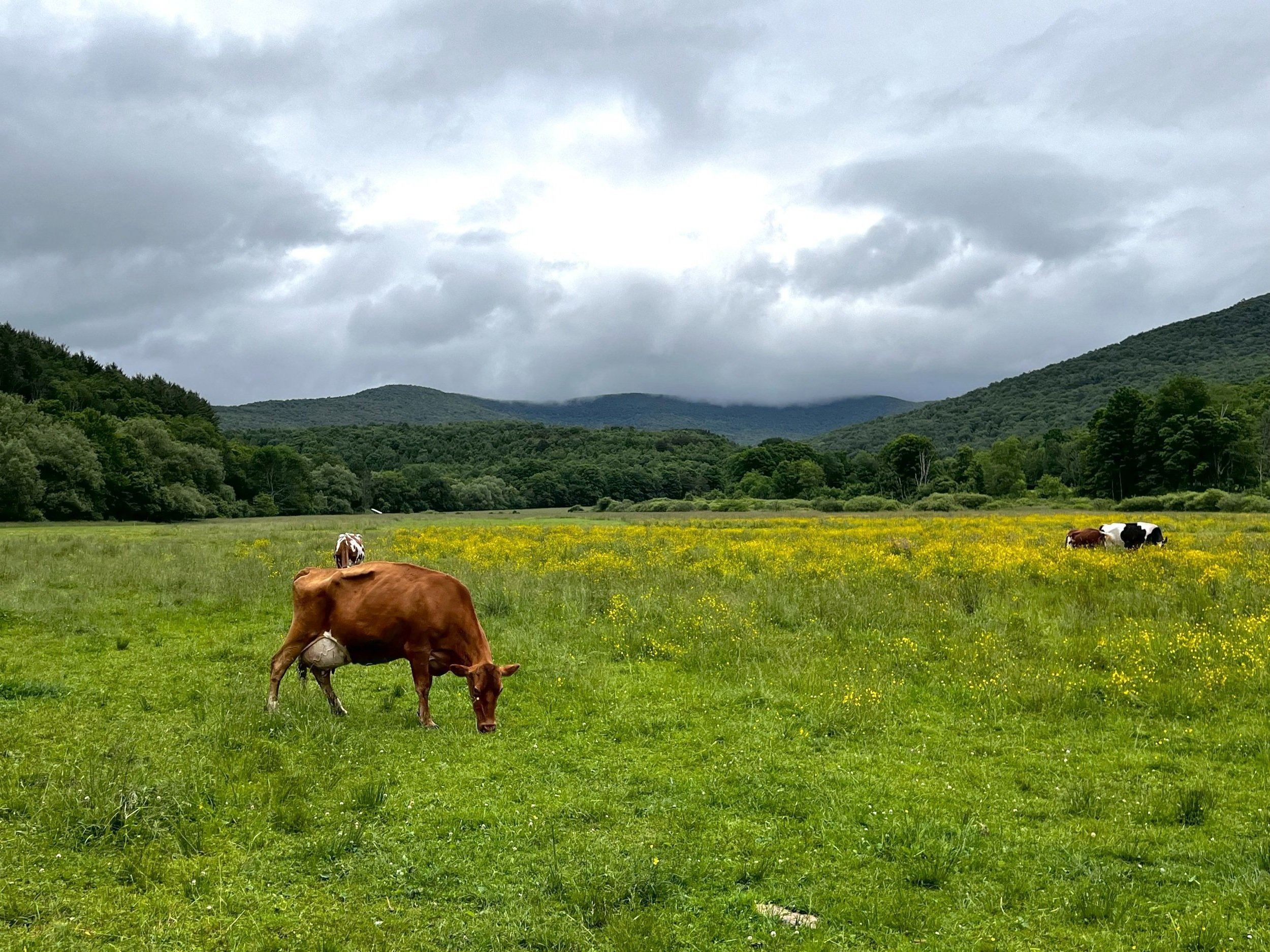
Carbon reduction from the ground up. Literally.
We help farmers and ranchers reduce their carbon footprint by investing in, managing, and measuring carbon-reduction practices on farms. Our farmer partners are more than dairy providers, they are carbon reduction pioneers.
In partnership with Neutral, dairy farmers are trying a variety of strategies to effectively reduce their farm’s carbon footprint. Read on for information on some of those projects.
Reducing methane production (a.k.a. gas) through feed supplements
Feed supplements that can reduce enteric methane emissions are a major area of research—and are showing huge potential. Supplements made from asparagopsis taxiformis, a red seaweed, have shown reductions in enteric methane of 80+%. We’re collaborating with Symbrosia to evaluate their product, SeaGraze™, in grazing management systems.
Neutral also has several projects underway utilizing a supplement called Agolin®, which is derived from essential oils. Studies have shown that it can reduce enteric methane emissions by about 8%. Though it’s a relatively modest reduction, enteric methane emissions are a significant source of on-farm emissions, and every bit counts!
Research also shows that Agolin® also has other co-benefits, including increased feed conversion. This means for the same amount of food a cow consumes, there is more milk produced.
Managing manure with solid-liquid separators
How cow waste is managed on a farm can entirely change the greenhouses gases that are emitted from it. When it decomposes anaerobically—without oxygen—it releases methane. When manure decomposes aerobically—with oxygen—it emits fewer potent greenhouse gases and shifts the balance to more carbon dioxide. While both gases aren’t great for the atmosphere, methane has a much higher warming potential, expediting climate change.
Scientific studies suggest that manure solid-liquid separation, storage, and aerobic composting strategies will lead to a reduction in greenhouse gas emissions on dairy farms. Neutral is working with multiple family-owned dairies in Washington and Oregon to design, install, and operate new manure management solutions.
Reducing methane through tannin-optimized forage
Forage is the collective mixture of natural grass and wildflowers found in cow feed. Compounds called tannins naturally reduce the methane produced during digestion, a process called enteric fermentation. That’s right, that mouth-puckering feeling you get when biting into unripe fruit or drinking certain wines can also play a role in the reduction of greenhouse gases.
Neutral has partnered with family-owned dairies in the Pacific Northwest to identify forage modifications that cows will love to eat, while also reducing their greenhouse gas output. With guidance from experts at Oregon State, Penn State & Utah State we’ve tailored an optimal forage composition containing tannins. In addition to reducing a cow’s carbon emissions, a diet with the right amount of tannin-condensed species, such as sainfoin, birdsfoot trefoil and some clovers, has also been shown to improve animal health and productivity.
Sequestration: harnessing the carbon-storing power of plants
Plants are experts at locking up carbon! Plants absorb the energy from sunlight and carbon dioxide from the atmosphere, transforming it into carbon-storing biomass. Peer-reviewed scientific studies show that through reforestation and improving forest management we can increase carbon stored above ground in the plants and below ground in the roots and soil. Planting trees in areas near water, known as riparian zones, is particularly beneficial at preventing soil erosion, protecting soil carbon, and improving water quality in critical watersheds.
Protecting existing stores of carbon, like those in grasslands and forests, is equally important! Diverse pastures and grasslands store large amounts of carbon that could be lost due to conversion to cropland or development. In collaboration with our farm partners, we’re evaluating an assortment of vegetation and cover methods to effectively remove greenhouse gases and protect soil carbon.





